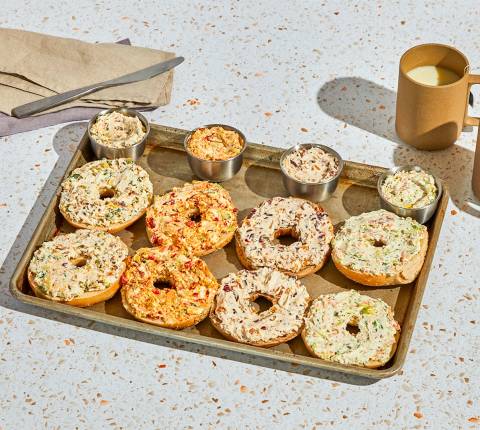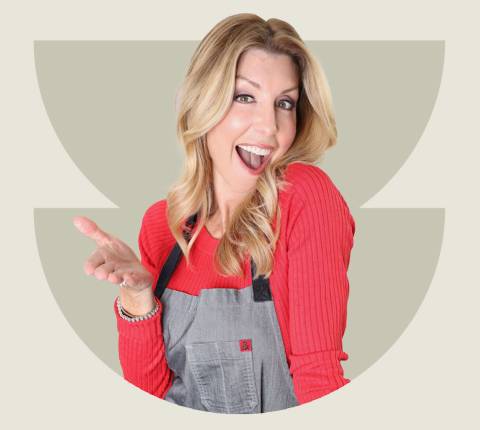Ramen, for many, is more than just a bowl of noodle soup — it’s a cult-like obsession. The Japanese have made an art form out of the Chinese-style wheat noodles, devoting three museums to the dish, and two documentarians have used it as their muse in the films "Ramen Heads" and "Come Back Anytime." One enthusiast even founded The Temple of Ramentology, “the religion of broth infused with the philosophy of noodles.” These devotees are fascinated by the seemingly endless broth and noodle varieties and their regional differences, not to mention the dozens of toppings. And aficionados know that real ramen is a far cry from the instant noodles of their youth.

Do you know your shoyu from your shio? Tonkotsu from tsukemen? In case you don’t, we’ve recruited Ivan Orkin, founder of NYC’s Ivan Ramen and the author of Ivan Ramen: Love, Obsession, and Recipes from Tokyo’s Most Unlikely Noodle Joint, and Tomo Nishimura, chef-owner of the eight locations of Kai Ramen in Los Angeles, to help navigate a typical ramen menu. Follow their tips and insights below on how to order the ultimate bowl.
Bone Up on the Broth
A painstakingly made broth is the hallmark of a good ramen shop. Though there are countless regional styles of broth, the most common include tonkotsu, which is “the number one most popular in the world,” says Orkin. “It’s a very rich and creamy pork broth, cooked for a really long time to melt the [pork] bones down.” Black tonkotsu, emboldened with black garlic, is a signature dish at Jinya Ramen Bar in Washington, D.C.
Shoyu, known as the original ramen broth, is seasoned with soy sauce. It’s the go-to order at Ani Ramen in New Jersey. Shio is a light, salty broth that is often made with chicken and flavored with dashi and seafood or nori; it’s a favorite at Shoku Ramen Bar in Houston.
Paitan, a specialty at Mugen Noodle Bar, a popular spot in the Portland, Oregon metro area, is a stronger chicken broth, known as the fowl counterpart of tonkotsu, as it is cooked for hours until milky and creamy. Miso ramen is powerfully flavored with miso paste and “cooked at a very high temperature so that the fat and miso emulsify until it is rich and creamy,” says Orkin. A vegan spicy miso ramen is a popular order at Menya Kanemaru Golden Ramen in San Francisco.

If you order tsukemen, which Nishimura calls a “ramen dipper,” the noodles come separate from the broth. “My version at Kai Ramen has jumbo noodles that stand up to dipping in a tonkotsu broth flavored with soy sauce.”
Then there’s mazemen, the “brothless” ramen in which a minimal amount of broth or fat is used to flavor the noodles. Orkin equates mazemen to “eating an Italian pasta dish.” The mazemen at Ivan Ramen is flavored with a reduced tonkotsu broth and served with pork belly two ways.
Know Your Noodles
Kansui — alkaline water — is what gives ramen noodles their distinct texture and color. Ramen noodles can be thick, thin, curly, straight, flat — all manner of styles. Good ramen shops take great pains to match the right type of broth with the right noodle for the perfect combination. As Orkin says, “I think of the noodles as you would think of bread for sandwiches. In the way you want your bread to match the filling, you want the noodles to match the broth so they slurp well.”
If ordering from a mix-and-match type of ramen shop, such as Inaka Ramen in Olympia, Washington, choose which broth-noodle pairing you think would complement each other best. Then, after making your choice, it’s topping time! Typical ramen toppings can include eggs, seafood, pork, chicken, nori, corn, bamboo shoots, and scallions. And while ramen enthusiasts are happy to dive into a steaming hot bowl at any time of year, cold noodles are often a nice seasonal option, says Nishimura. “Hiyashi chuka is a cold ramen that can be very pleasant and cooling in the summertime,” he says, “especially if you live in a hot climate.”

Strike a Separation Agreement
For the best ramen delivery experience, it’s important to ask for the noodles, broth, and toppings to be packaged separately. While many ramen shops will do this automatically, it doesn’t hurt to ask. “Otherwise the noodles might get soggy,” Nishimura says. Orkin agrees, “No one wants a mushy noodle.”
Heat It
Other than in the case of hiyashi chuka, ramen is best enjoyed hot. “When your order arrives, mix your noodles and soup, then microwave it or heat it at a simmer on the stove,” Orkin advises. “But be extremely careful not to overheat. Don’t just put it on the stovetop and walk away, or you might be left with mushy noodles and a broth that cooks down and will end up as a salty mess.” Nishimura agrees, adding, “Heat it just enough so that the noodles maintain their chewiness. Add the toppings after heating.”
Pair It
Another great thing about ramen: Nearly any beverage goes with it. Orkin says that eating ramen “is a great excuse to open a bottle of sake.” He also enjoys ramen with a crisp, cold pilsner. As for nonalcoholic options, Nishimura enjoys his ramen with yuzu-flavored Ramune soda or tea. Thai-style teas are a popular order at Kai, and Orkin’s restaurant offers house-made barley iced tea and yuzu lemonade. Not all ramen shops offer alcoholic drinks to-go, but some do; you can get Japanese sake and beer delivered from High Five Ramen in Chicago.

Don’t Forget to Slurp!
While slurping is par for the course in Japan, some Americans are too self-conscious to slurp while dining at a ramen shop — which leads us to the best part about ordering ramen in the privacy of your own home: You can slurp away without embarrassment! “People need to slurp,” says Orkin, “because ramen tastes better when you're slurping it. Slurping cools the noodles and ensures you get all of that coagulated flavor together. Learn how to flap your lips rather than chewing and spitting. I just don't understand the whole chewing and spitting thing!”
You heard it from the experts. Order up a bowl of ramen with the broth and noodles that strike your fancy, pair it with a beverage of your choice, and slurp away.






